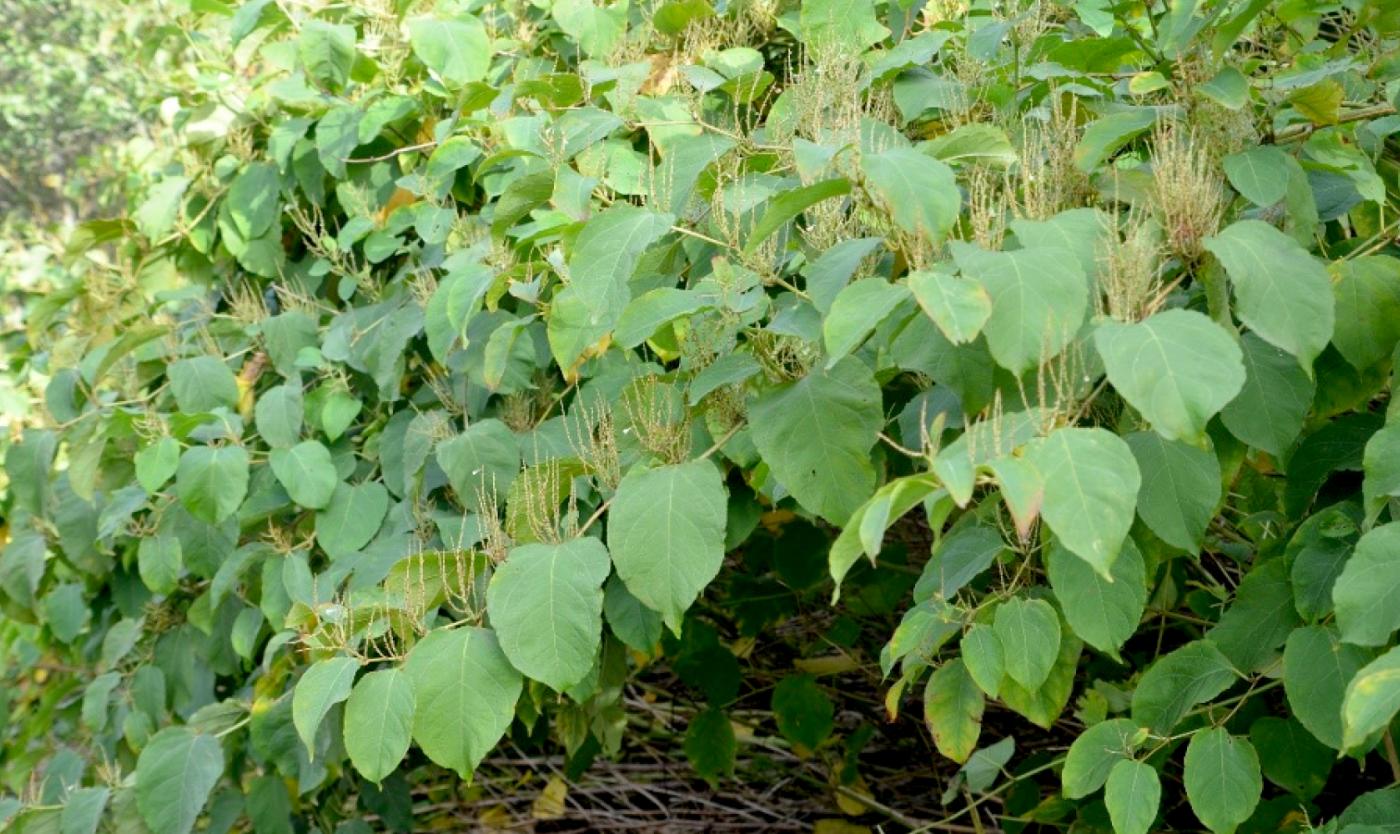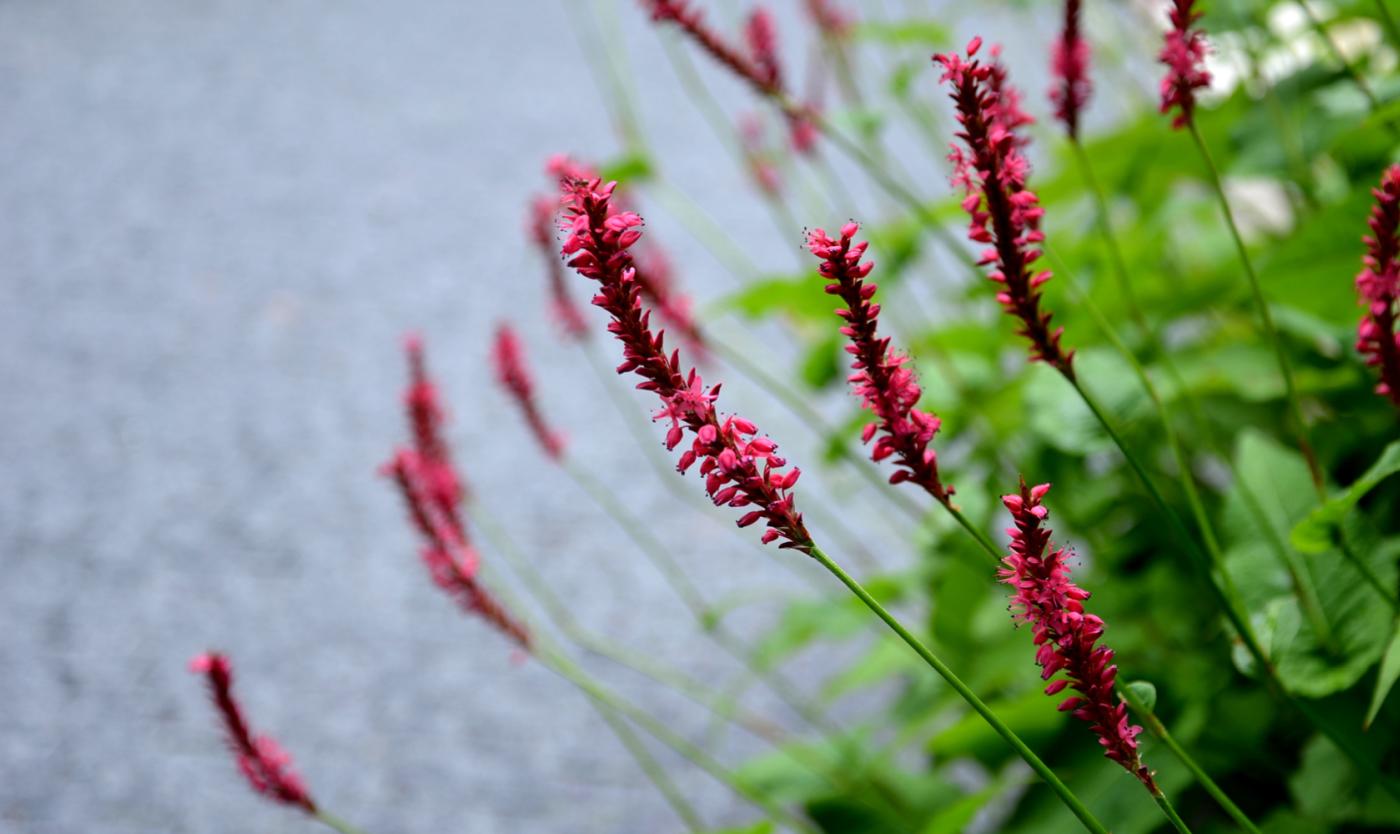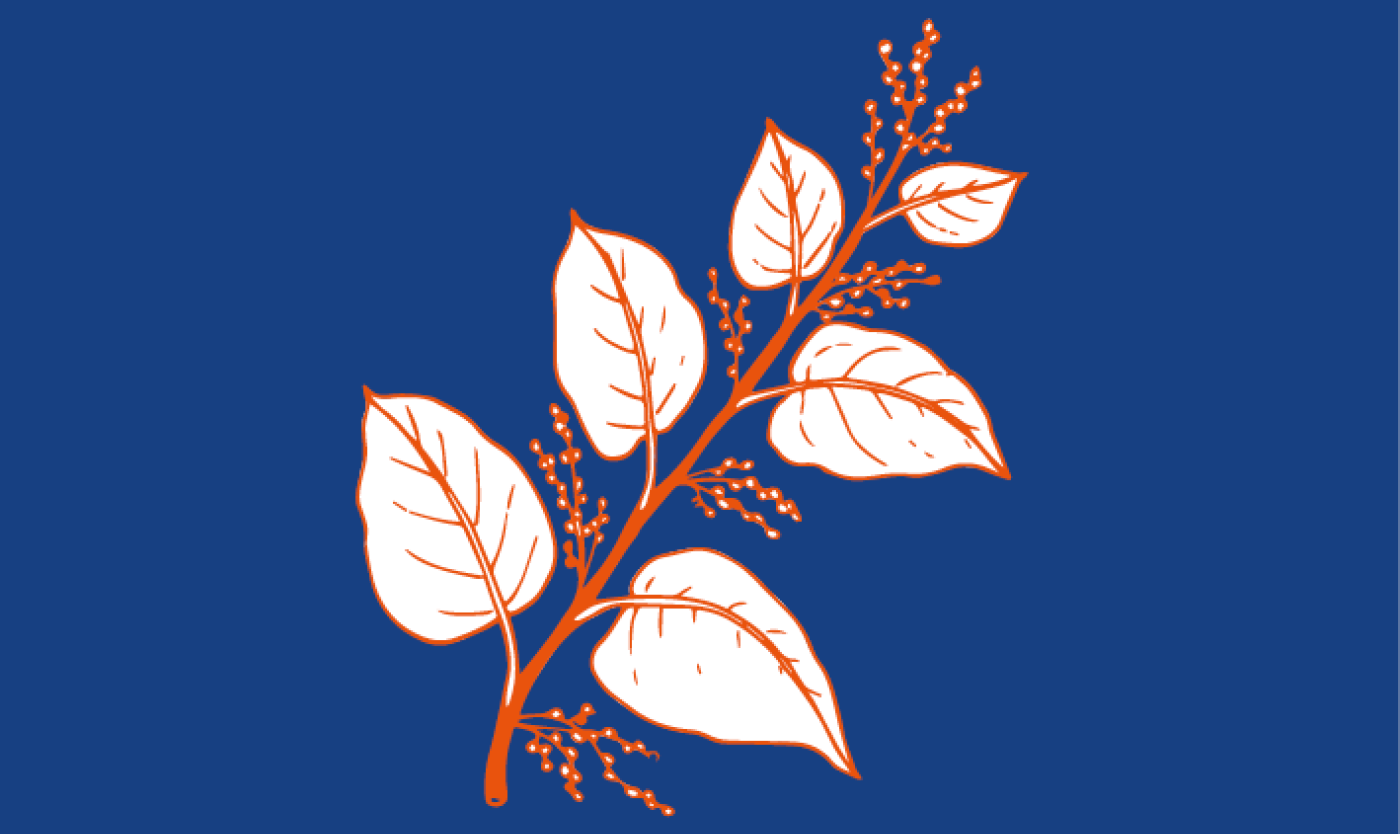From ornamental gardens to the wild
Originally, their red-spotted green stems, heart-shaped leaves and exceptionally fast growth made them very popular in ornamental gardens. Nowadays, these species can be found in the wild everywhere in Belgium, in humid and light places. These ‘rampant’ species are called invasive because they pose a threat to local biodiversity. Invasive centipedes can cause considerable damage, which is why many green space managers are at a loss.


Three species in particular cause a lot of headaches: Japanese knotweed (Fallopia japonica) and Sakhalin knotweed (Fallopia sachalinensis) are originally from East Asia. Bohemian knotweed (Fallopia x bohemica) is the result of the cross-breeding of the two species.
Rampant rhizome
In this case, the sting is not in the tail but ... underground. At about 1 to 2 metres below ground level, there is an impressive set of rhizomes, which expand up to 1 metre horizontally every year. These rhizomes store up a lot of nutrients and can therefore survive for years, even in dry or dark conditions. Moreover, the smallest piece of rhizome - floating in a river, for example - can easily grow back into a fully-fledged plant. Due to their enormous growing power, these roots can break open buildings or infrastructure through cracks.
How can we successfully control invasive knotweeds?
Scientists and green space managers have been experimenting for several years with the most diverse forms of control to reduce knotweed: very intensive pruning, chemical pesticides, injecting steam and boiling water, grazing by sheep, blocking out sunlight for years by covering the soil with heavy cloths, or quarantining contaminated soil up to 5 years. They have even introduced exotic fungi that can act as natural enemies.
Some projects are hopeful, but there is no miracle solution. And it seems that the plant spreads even more vigorously when it is put under pressure. Paradoxically, doing nothing is often the best solution. Therefore, prevention and keeping existing breeding grounds under control are important strategies at the moment.
Knotweed jam, anyone?
But let’s conclude on a positive note: bees and wasps love the nectar that the small cream-coloured flowers produce in the summer months. And the plant is edible for humans too: it tastes like sour rhubarb.
